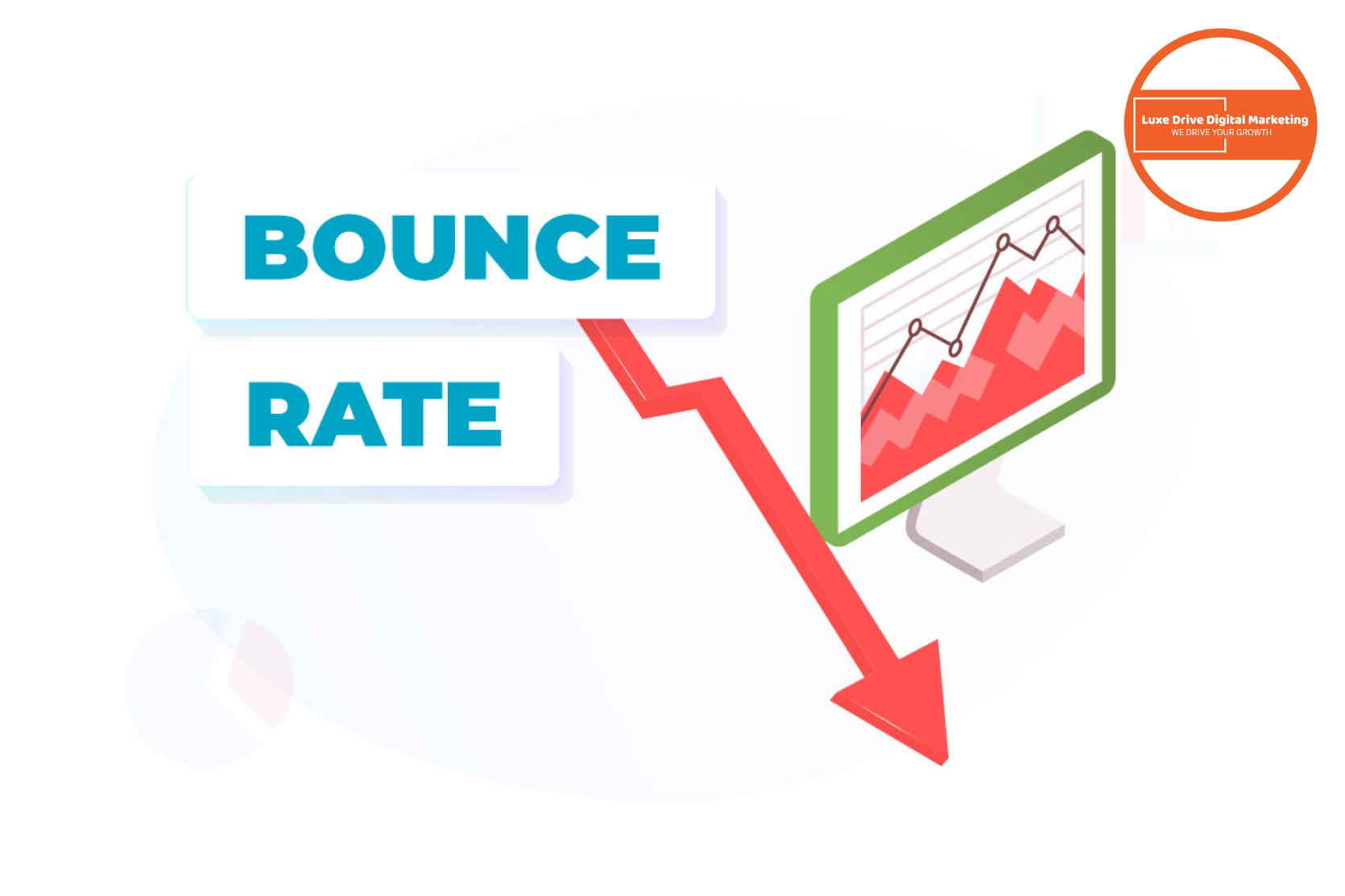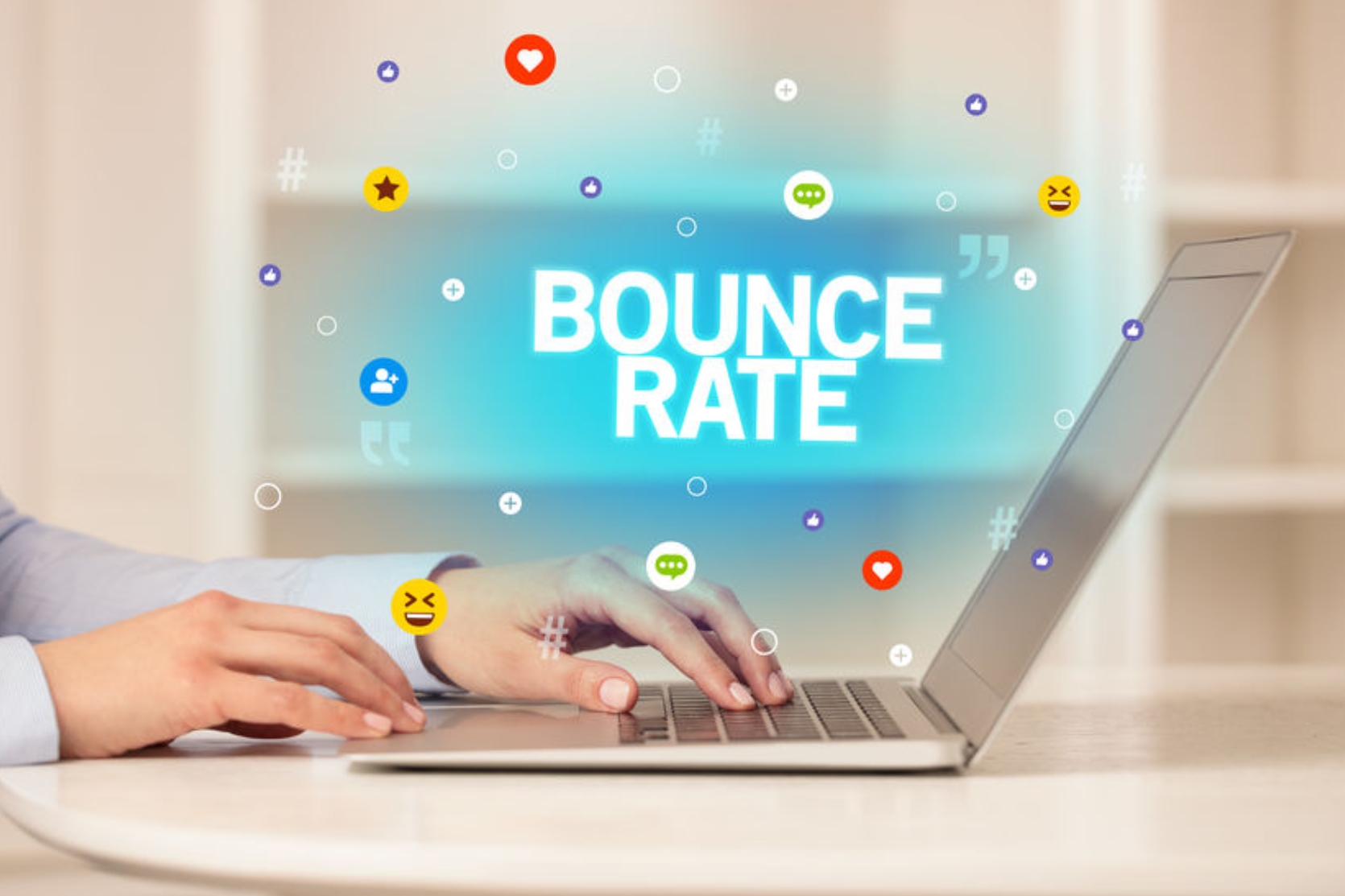A high bounce rate can significantly impact your website’s performance and conversion potential. When visitors leave your site without engaging with your content, you’re missing valuable opportunities to convert them into customers. This comprehensive guide explores effective strategies to reduce bounce rates, enhance user experience, and ultimately boost your conversion rates.
What Is Bounce Rate and Why Should You Care?
Bounce rate is the percentage of visitors who navigate away from your website after viewing only one page. This metric is crucial for understanding how effectively your website engages visitors. A high bounce rate often indicates that your landing page isn’t meeting visitor expectations or providing the value they seek.
Google Analytics defines a bounce as a single-page session without any interaction. The bounce rate is calculated by dividing single-page sessions by the total number of sessions. Understanding this metric helps identify potential issues with your website’s content, design, or user experience.
Different websites have different bounce rates depending on their purpose and industry. For example, blogs typically have higher bounce rates than e-commerce sites. However, a good bounce rate generally falls between 26% and 40%, while anything above 70% is considered high and potentially problematic.
What Causes High Bounce Rates on Your Website?
Understanding the common causes of high bounce rates is essential for developing effective solutions. Several factors can contribute to visitors leaving your site prematurely:
Slow load time is one of the primary reasons for high bounce rates. Research shows that 53% of mobile users abandon sites that take longer than three seconds to load. Page load time directly impacts user experience and can significantly affect your bounce rate.
Poor website design and navigation confusion can frustrate visitors, causing them to bounce immediately. If users can’t find what they’re looking for quickly, they’re likely to leave. A cluttered layout, confusing menu structure, or non-responsive design can all contribute to navigation issues.
Irrelevant or low-quality content fails to engage visitors and address their needs. If your landing page doesn’t deliver on the promises made in your ads or search listings, visitors will exit quickly. Content that doesn’t match user intent or provide value leads to higher bounce rates.
How Is Bounce Rate Calculated in Different Analytics Platforms?
Bounce rate is calculated differently across various analytics platforms, which can sometimes lead to confusion when analyzing your website’s performance.
In traditional Google Analytics, bounce rate is the percentage of all sessions where users viewed only a single page and triggered only a single request to the analytics server. This definition focuses solely on pageviews as the measure of engagement.
Google Analytics 4 has updated how bounce rate is calculated. In GA4, bounce rate is defined as the percentage of sessions that were not engaged sessions. An engaged session requires either 10+ seconds of activity, 2+ page views, or a conversion event. This new approach provides a more nuanced view of user engagement.
Understanding the difference between bounce rate and exit rate is also important. While bounce rate measures single-page sessions, exit rate indicates the percentage of visitors who leave from a specific page after visiting multiple pages on your site. Both metrics provide valuable insights but measure different aspects of user behavior.
What Is a Good Bounce Rate for Different Types of Websites?
Bounce rate can vary significantly depending on your website type, industry, and specific goals. Understanding what constitutes a good bounce rate for your particular situation is crucial for setting realistic improvement targets.
For e-commerce websites, a good bounce rate typically ranges between 20% and 45%. Lower bounce rates are expected since users generally need to navigate through multiple pages to complete a purchase. Higher bounce rates might indicate issues with product pages, navigation, or checkout processes.
Content-focused websites like blogs naturally have higher bounce rates, typically between 65% and 90%. This is because users often find the information they need on a single page and then leave. However, even for content sites, strategies to encourage further exploration can improve engagement.
Landing pages designed for specific campaigns often have the highest bounce rates across different website types. A good bounce rate for landing pages is generally under 70-80%, depending on the page’s purpose. Conversion-focused landing pages should prioritize clear CTAs to guide users toward desired actions.
How Can User Experience Improvements Reduce Bounce Rate?
Enhancing user experience (UX) is one of the most effective ways to reduce bounce rate and improve conversions. Several key UX improvements can make a significant difference:
Improving page load time is critical for reducing bounce rates. Research shows that even a one-second delay in page load time can reduce conversions by 7%. Optimize images, leverage browser caching, minimize HTTP requests, and consider using a Content Delivery Network (CDN) to speed up your website loads. Regular monitoring of page load time across different devices and connection speeds helps identify ongoing optimization opportunities.
Creating intuitive navigation helps visitors find what they’re looking for quickly. A well-structured menu, clear categorization, and logical information hierarchy make your website more user-friendly. Implementing breadcrumbs, search functionality, and related content suggestions can further enhance navigation. When users can easily move through your site, they’re less likely to bounce and more likely to engage with multiple pages.
Implementing responsive design ensures your website performs well across all devices. With mobile traffic accounting for more than half of all web traffic, a mobile-friendly website is essential for reducing bounce rates. Test your website on various devices and screen sizes to ensure consistent functionality and appearance. Responsive design not only improves user experience but also positively impacts your SEO performance.
What Content Strategies Help Reduce Your Bounce Rate?
Content plays a crucial role in engaging visitors and keeping them on your site longer. Implementing effective content strategies can significantly reduce bounce rates:
Creating high-quality, relevant content that addresses user intent is fundamental. Understand what your audience is searching for and provide comprehensive answers to their questions. Content that delivers value and solves problems encourages visitors to stay longer and explore more of your site. Use audience research to identify topics that resonate with your target market and create content that exceeds their expectations.
Improving readability and formatting makes your content more accessible and engaging. Break up text with subheadings, bullet points, and short paragraphs. Use descriptive headings that help users scan for relevant information. Incorporate visuals like images, infographics, and videos to enhance understanding and engagement. Well-formatted content reduces cognitive load and makes information easier to consume, reducing the likelihood of bounces.
Implementing internal linking strategies guides visitors to related content on your site. Strategic internal links help users discover more valuable information and encourage deeper exploration of your website. Create contextual links that add value rather than generic “read more” links. A well-executed internal linking structure improves navigation, increases page views, and reduces bounce rates by providing clear pathways to additional relevant content.
How Can You Optimize Landing Pages to Lower Bounce Rate?
Landing pages often have the highest bounce rates on websites, making them prime targets for optimization:
Aligning landing page content with visitor expectations is essential for reducing bounce rates. Ensure your landing page delivers on the promises made in your ads, emails, or search listings. The messaging should be consistent across all touchpoints to avoid confusing visitors. When users find exactly what they expected, they’re more likely to engage with your content and less likely to bounce.
Implementing clear and compelling CTAs (calls to action) guides visitors toward desired actions. Your CTAs should stand out visually, communicate clear value, and create a sense of urgency. A/B test different CTA placements, colors, and copy to determine what works best for your audience. Effective CTAs reduce bounce rates by providing clear next steps for visitors to take.
Using A/B testing to optimize landing page elements helps identify what resonates with your audience. Test different headlines, images, layouts, and value propositions to determine which combinations perform best. Data-driven optimization based on actual user behavior leads to landing pages that effectively engage visitors and reduce bounce rates. Continuous testing and refinement are key to long-term landing page performance.
What Technical Improvements Can Reduce Bounce Rates?
Technical aspects of your website significantly impact user experience and bounce rates:
Optimizing website speed through technical improvements is critical. Compress images, minify CSS and JavaScript files, leverage browser caching, and consider implementing AMP (Accelerated Mobile Pages) for faster mobile loading. Use tools like Google PageSpeed Insights to identify specific technical improvements that can enhance your site’s performance. Technical optimization not only reduces bounce rates but also improves your overall SEO performance.
Fixing broken links and 404 errors prevents user frustration and abandonment. Regularly audit your website for broken links using tools like Screaming Frog or Google Search Console. Create custom 404 pages that guide users back to functioning parts of your site when they encounter errors. Eliminating these technical issues improves user experience and keeps visitors engaged with your content.
Implementing schema markup helps search engines better understand your content, potentially improving how your pages appear in search results. Rich snippets can increase click-through rates and attract more qualified traffic to your site. When visitors find exactly what they’re looking for, they’re less likely to bounce. Schema markup enhances the relevancy of your search listings, leading to better-qualified traffic with lower bounce rates.
How Does Analytics Help in Bounce Rate Optimization?
Effective use of analytics is crucial for understanding and improving bounce rates:
Using Google Analytics 4 to identify high-bounce pages helps prioritize optimization efforts. Set up custom reports to track bounce rates across different sections of your site and identify patterns or problem areas. GA4’s engagement metrics provide deeper insights into user behavior than traditional bounce rate alone. Focus your improvement efforts on pages with high traffic and high bounce rates for maximum impact.
Analyzing user behavior with heatmaps and session recordings reveals how visitors interact with your pages. Tools like Hotjar or Crazy Egg visualize where users click, how far they scroll, and where they spend the most time. These insights help identify specific elements that may be causing confusion or failing to engage visitors. Understanding actual user behavior is invaluable for making targeted improvements that reduce bounce rates.
Setting up conversion funnels helps track user journeys and identify drop-off points. Analyze where users abandon your conversion paths and implement improvements to address these issues. Conversion funnel analysis connects bounce rate to your ultimate goal—conversions—and helps prioritize changes that impact your bottom line. Regular funnel analysis ensures your optimization efforts align with your business objectives.
What Strategies Improve Both Bounce Rate and Conversion Rates?
Some strategies effectively address both bounce rate and conversion optimization simultaneously:
Creating personalized user experiences based on visitor behavior and preferences can dramatically improve engagement. Use dynamic content, personalized recommendations, and targeted messaging to make your site more relevant to each visitor. Personalization makes users feel understood and valued, increasing both engagement and conversion probability. Tools like Google Optimize or Dynamic Yield can help implement personalization at scale.
Implementing exit-intent popups captures visitors before they leave your site. These targeted messages appear when users show signs of leaving and can offer incentives to stay or take a specific action. While overuse of popups can harm user experience, strategically implemented exit-intent offers can recover potentially lost visitors and improve conversion rates. Test different offers and messaging to find what resonates with your audience.
Optimizing for user intent ensures your content meets visitor expectations. Understand the different types of search intent (informational, navigational, transactional) and create content that satisfies each type. When users find content that matches their intent, they’re more likely to engage and convert. Aligning your content strategy with user intent improves both engagement metrics and conversion rates.
Key Takeaways for Reducing Bounce Rate and Improving Conversions
• Page load time is critical—optimize your website to load in under 3 seconds to prevent visitors from abandoning your site.
• User experience improvements like intuitive navigation, responsive design, and clear CTAs significantly reduce bounce rates.
• High-quality, relevant content that addresses user intent keeps visitors engaged and encourages them to explore your site further.
• Landing page optimization should focus on aligning content with visitor expectations and providing clear next steps.
• Technical improvements including speed optimization, fixing broken links, and implementing schema markup create a smoother user experience.
• Analytics tools like Google Analytics 4 provide valuable insights for identifying and addressing high-bounce pages.
• Personalization strategies that create tailored experiences for different user segments improve both engagement and conversion rates.
Conclusion
Reducing your website’s bounce rate requires a multifaceted approach that addresses both technical and content-related aspects of your site. By implementing the strategies outlined in this guide, you can create a website that not only retains visitors but also effectively converts them into customers. Remember that bounce rate optimization is an ongoing process that requires regular monitoring, testing, and refinement.
Focus on creating exceptional user experiences through fast-loading pages, intuitive navigation, and responsive design. Develop high-quality content that addresses user intent and encourages deeper site exploration through effective internal linking. Use analytics data to identify problem areas and measure the impact of your improvements.
When you successfully lower your bounce rate, you’ll likely see corresponding improvements in other key metrics like engagement rate, time on site, and most importantly, conversion rates. The effort invested in bounce rate optimization ultimately contributes to your website’s overall effectiveness as a marketing and sales tool, making it as easy as possible for visitors to become customers.



